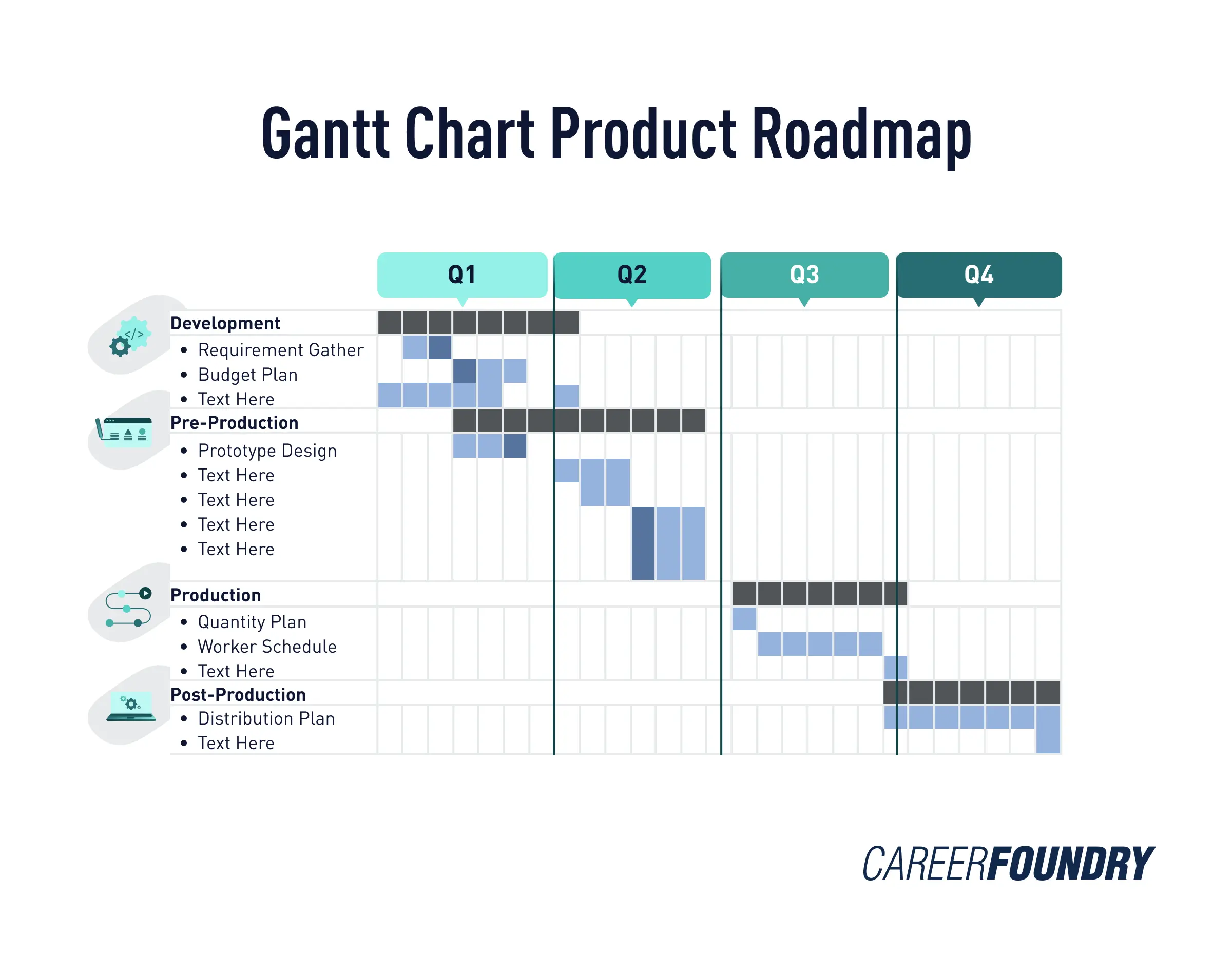In the product management world, two often compared and contrasted frameworks are Agile vs Waterfall.
Understanding both is essential, whether you’re a beginner product manager or an experienced product pro. After all, your choice will help you successfully and quickly develop products and get them to the market.
As frameworks, the two are significantly different in approach. In this blog article, we decode the Agile and Waterfall methodologies, look at their differences, and explain how to choose the one appropriate for your product management needs. Read on to discover:
- What is Waterfall?
- What is Agile?
- Agile vs Waterfall: What’s the Difference?
- When to use Agile vs Waterfall: Picking the right methodology
- Bottom line: The agile vs waterfall answer depends on your product needs
1. What is Waterfall?
The waterfall framework is a traditional project management methodology developed by Dr. Winston W. Royce in 1970.
It’s a linear and structured approach to completing projects with the help of a series of steps in sequential order. The methodology usually uses Gantt chart visualizations to track these sequential steps.

How the Waterfall framework works: A quick guide
Now that we’ve learned what it is, let’s quickly look at how the framework functions:
1. Collection of requirements
At this stage, product features are outlined in detail, which allows all the stakeholders to agree on requirements and deliverables.
2. Design the product
The next step takes place in two stages—logical and physical design. During the logical design phase, the product development team brainstorms to arrive at various possible solutions that will help deliver the product in time.
The development team then chooses the best possible design, decomposes it into specific tasks, and distributes them to different groups. This is known as the physical design stage.
3. Implementation
In the third step, the teams implement the agreed-upon tasks in the previous stages.
4. Verification or testing
The fourth step is verifying and testing if the product works smoothly.
5. Deployment and maintenance
The fifth and final step is to provide ongoing maintenance support to end users.
2. What is Agile?
Agile methodology is radically different from the Waterfall method. It’s a relatively new project management framework focusing on iteration, autonomy, and flexibility. Unlike the Waterfall method, it is non-linear and is not structured rigidly.
Here are the critical steps followed in an Agile framework:
- First, the product owner, or the person in charge of bringing the product vision to life, carefully tracks progress and liaises with the scrum master, who is in charge of different teams and stakeholders.
- The scrum master then divides a task into sprints, typically lasting one to four weeks. During this stage, the teams self-organize and determine how best to allocate their resources and deliver quickly.
- Constraints, challenges, and difficulties are communicated during daily meetings and sprint retrospectives, culminating in successfully completing sprints.
- Teams then make changes to the tasks based on the outcomes as they develop the product without interfering with the essence of the product.
- They continue to brainstorm and discuss any shortcomings during daily meetings.
The Agile product management method usually produces quick results and allows flexibility to make product changes when necessary.
3. Agile vs. Waterfall: What’s the difference?
As you’ve learned already, the two frameworks are quite contrasting to each other. Agile is a newer project management framework that offers more freedom to all stakeholders, resulting in quicker project completion.
The Waterfall method, in that sense, is a traditional way of managing projects and is often constrained by strict deadlines and its linear approach.
Here are some tabulated differences around the intricacies of the two:
| Criteria | Agile Methodology | Waterfall Methodology |
| Client involvement | Clients are involved at multiple stages as the approach is iterative in nature. | Limited. Restricted to defining the scope of projects and sharing of milestones. |
| Addressing deadlines | Deadlines are flexible, and missing out on any isn’t seen as a blunder. Teams often discuss them during daily standup meetings, and can be reviewed before the team moves forward. In case of delays, the scrum master in the Agile framework tries to understand the cause and address it. | Deadlines are rigid, as missed deadlines directly impact the timely completion of future tasks due to linearity in the workflow. Missed deadlines create a cascading effect, delaying the final product. |
| Room for changes | Cn always go back and make changes without affecting the next step. This flexibility is essential in areas like software development as the Agile framework allows rectifying mistakes on the go. Most importantly, challenges are discussed, and iterations are conducted so that mistakes do not repeat. | Teams are entirely focused on completing the next stage of work. Therefore, changing the approach or rectifying any mistakes made in the previous steps can become difficult. Multiple permissions are needed to go that route. However, this rigidity can be advantageous when implementing pre-decided product development practices. |
| Impact on employee morale | Imperfect submissions are evaluated, and changes are discussed during daily meetings. As a result, teams can feel less compelled to stretch projects beyond deadlines. This can improve teams’ morale and productivity and help them to complete tasks quickly. | Keeps employees on their toes, as there is no room to make changes once a phase is completed. This may reduce employee morale if managers are perfectionists. A linear contingency strategy to rectify mistakes when they occur can reduce employee anxiety. . |
| Collection of feedback | Scrum master can collect feedback from end users through surveys, interviews, and other techniques. They then communicate this information to the product owner and the development team. This way, changes can be made to the product even before it is completed. | No method to collect user feedback. This works well for products whose features are tried and tested and must be reproduced without external influence. |
4. When to use Agile vs. Waterfall: Picking the right methodology
As a product manager, you must pick the appropriate methodology as it directly impacts your success. A proper answer to that choice depends on the specific requirements of your project.
Usually, the Waterfall approach is suitable in cases where:
- The project scope is well-defined and stable
- The budget and timeline are rigidly agreed upon
However, as a product manager, you’ll need to focus well on communication between teams, so there are no delays. You can choose this method if your product is a simple software program that does not require constant upgrades.
Alternatively, you can also use it when manufacturing physical products with a set pattern of product development.
On the other hand, Agile is more suitable in cases where:
- The project scope is not clearly defined and may need to be adjusted
- There’s a need to incorporate feedback in the process
- There’s a high level of stakeholder involvement with regular communication
This framework is ideally suited for products that constantly evolve, such as complex software programs. However, you must note that when following this, you’ll also need to involve other stakeholders.
These include the product owner (who doesn’t own the product but envisions the successful completion and launch of the product) and scrum master (who’ll ensure that the product owner’s vision is translated into actual work while also liaising with different teams and third-party entities, including end-users). So, you’ll need to have prior knowledge and training in the Agile methodology to implement it successfully.
With that, it’s also important to note that these two methodologies need not be treated as mutually exclusive. You may also follow them together in a hybrid approach. In that case, you can address the fixed requirements with Waterfall while approaching the loosely defined aspects using agile.
5. Bottom Line: The Agile vs Waterfall answer depends on your product needs
As a product manager, you have to know about both Waterfall vs Agile methodologies. A Zippia study shows that projects which employ the Waterfall methodology have a success rate of 49%, whereas projects which use the Agile framework have a success rate of 64%.
However, this doesn’t mean that one is better than the other. Both of these methods have pros and cons, and the right choice of framework depends on the situation and your product needs.
If your product requires constant upgrades and bug fixes, and the addition of new features, you can choose the Agile method. If your product is a simple software program or requires physical manufacturing of a product, the Waterfall method is more appropriate as it follows a linear approach. Sometimes, you may also find the best answer in a hybrid approach where you follow Waterfall on some aspects, whereas Agile on others.
We hope that you can maximize your success as a product manager by understanding the differences between Agile and waterfall and knowing when to use which one.
Are you a beginner looking to pick up the reins on successfully navigating product development?
Check out this free 5-day product management short course, or pick some knowledge from our most-read guides:
